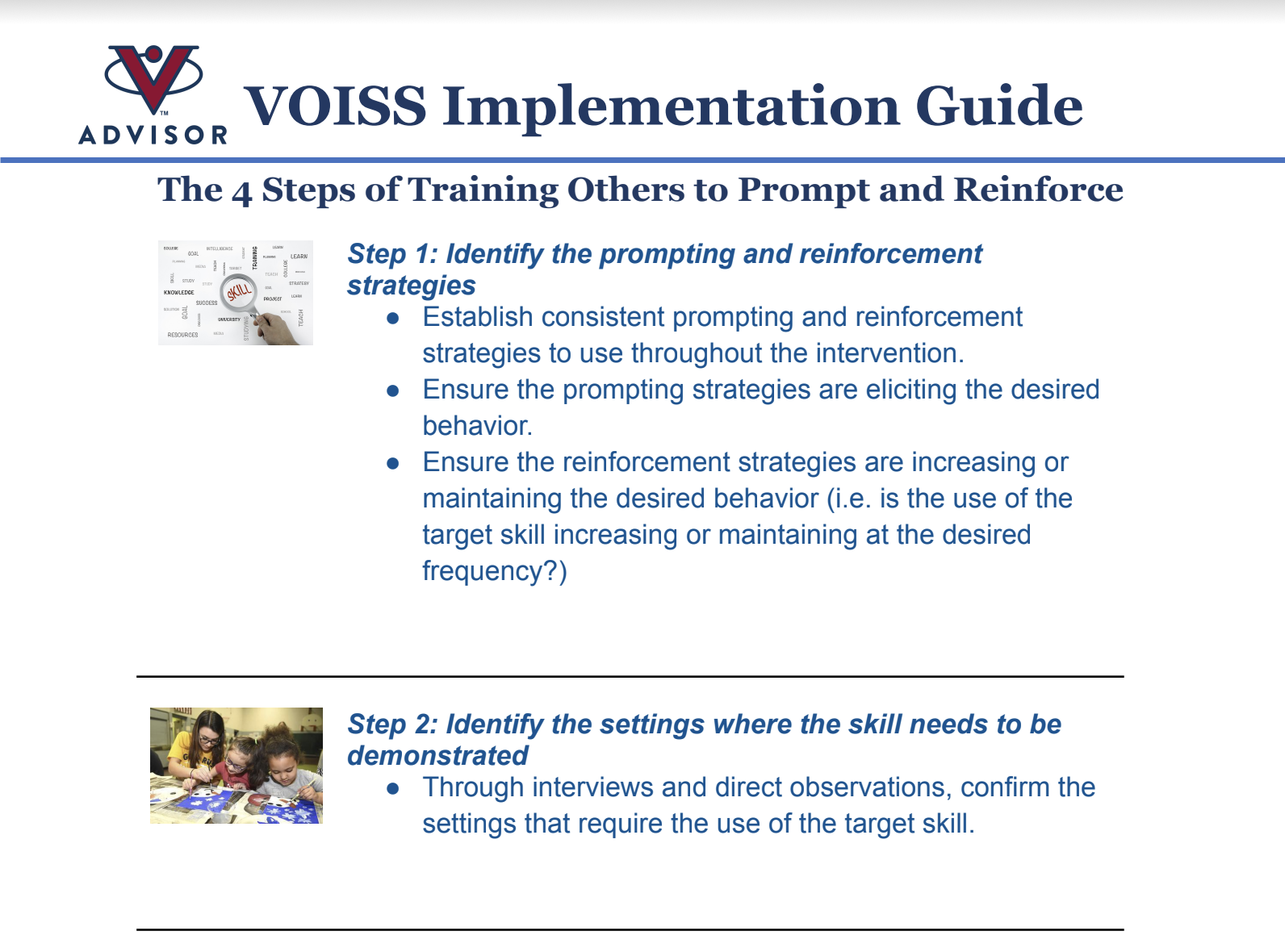training others
Overview of Training Others
Training others to facilitate prompts and reinforcements is a strategy that instructs individuals across school and home environments to employ identical prompts and reinforcements to support student social skill generalization across settings.
Implementation Guide

Additional Tips

Ensure the target skill is easy to identify by all individuals involved with supporting the learner.
The target skill will be reinforced on a more consistent basis when the skill is easily identifiable by everybody involved.

Ensure the individuals involved understand when and under what circumstances the desired skill should be used by the learner.
This will ensure the teachers and/or peers involved with prompting and reinforcing the learner are using this strategy at the right times.

Develop a prompting protocol
- Ensure the learner is given an adequate amount of “wait time” to use the skill before the skill is prompted.
- Establish a “fixed” amount of time that will pass before delivering the prompt (i.e. 6 seconds, 10 seconds, whatever is appropriate for the learner.)
- Teach the individuals involved to count in their heads before delivering the prompt to ensure they are adhering to the “fixed” amount of wait time established before delivering a prompt.

Establish what types of prompts will be used
- Verbal prompts are often the hardest types of prompts to fade out, therefore consider using visual, modeling, or gestural prompts if possible.
- If using verbal prompts are the easiest types of prompts to use to ensure the prompting is occurring with fidelity, feel free to use the verbal prompts. It’s most important to ensure the prompting is happening.

Establish what type of reinforcement will be delivered by the individuals involved with supporting the learner.
Consider using reinforcement that is easy and quick to deliver (verbal praise, high fives, fist bumps, etc)

If using peers, make sure and provide positive reinforcement for their efforts.
- Token systems: one token every time the skill is prompted and/or reinforced.
- Provide preferred activities
- Set goals with the peers to try and prompt and/or reinforce the skill a certain number of times per day.

When using peers, discuss the importance of helping others in the community as one of the rationales for participating in the intervention.
This intervention has great potential for teaching others kindness, compassion, and the importance of helping others in your community.

This intervention could lead to friendships
Peers may become emotionally invested in the learner and develop compassion for the learner that can lead to a friendship.

